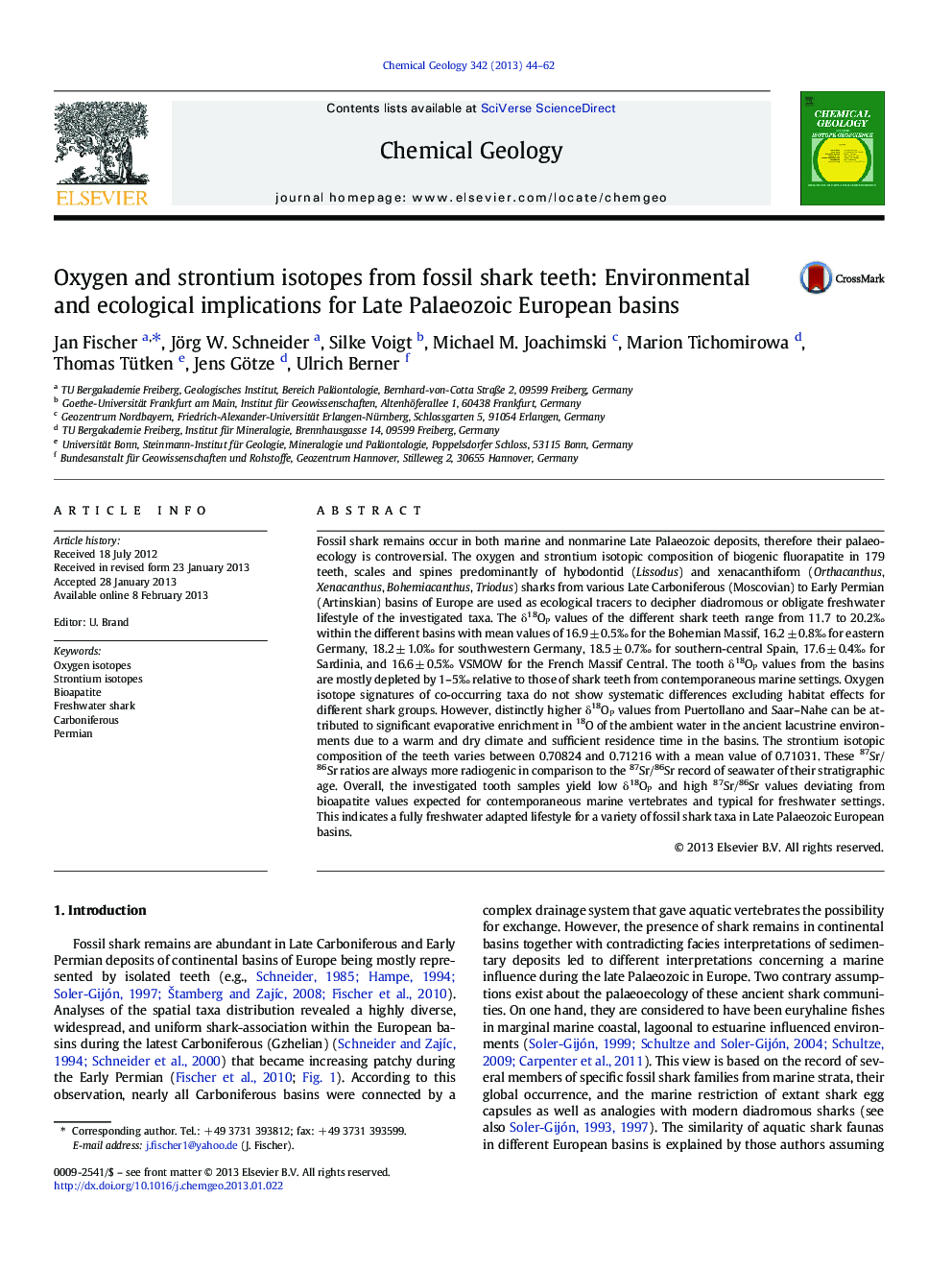| کد مقاله | کد نشریه | سال انتشار | مقاله انگلیسی | نسخه تمام متن |
|---|---|---|---|---|
| 4699069 | 1637626 | 2013 | 19 صفحه PDF | دانلود رایگان |
Fossil shark remains occur in both marine and nonmarine Late Palaeozoic deposits, therefore their palaeoecology is controversial. The oxygen and strontium isotopic composition of biogenic fluorapatite in 179 teeth, scales and spines predominantly of hybodontid (Lissodus) and xenacanthiform (Orthacanthus, Xenacanthus, Bohemiacanthus, Triodus) sharks from various Late Carboniferous (Moscovian) to Early Permian (Artinskian) basins of Europe are used as ecological tracers to decipher diadromous or obligate freshwater lifestyle of the investigated taxa. The δ18OP values of the different shark teeth range from 11.7 to 20.2‰ within the different basins with mean values of 16.9 ± 0.5‰ for the Bohemian Massif, 16.2 ± 0.8‰ for eastern Germany, 18.2 ± 1.0‰ for southwestern Germany, 18.5 ± 0.7‰ for southern-central Spain, 17.6 ± 0.4‰ for Sardinia, and 16.6 ± 0.5‰ VSMOW for the French Massif Central. The tooth δ18OP values from the basins are mostly depleted by 1–5‰ relative to those of shark teeth from contemporaneous marine settings. Oxygen isotope signatures of co-occurring taxa do not show systematic differences excluding habitat effects for different shark groups. However, distinctly higher δ18OP values from Puertollano and Saar–Nahe can be attributed to significant evaporative enrichment in 18O of the ambient water in the ancient lacustrine environments due to a warm and dry climate and sufficient residence time in the basins. The strontium isotopic composition of the teeth varies between 0.70824 and 0.71216 with a mean value of 0.71031. These 87Sr/86Sr ratios are always more radiogenic in comparison to the 87Sr/86Sr record of seawater of their stratigraphic age. Overall, the investigated tooth samples yield low δ18OP and high 87Sr/86Sr values deviating from bioapatite values expected for contemporaneous marine vertebrates and typical for freshwater settings. This indicates a fully freshwater adapted lifestyle for a variety of fossil shark taxa in Late Palaeozoic European basins.
► First comprehensive isotope analysis of Late Palaeozoic shark teeth from Europe
► Unequivocal freshwater conditions in all investigated European basins
► Distinctly high δ18OP values are the result of significant evaporative enrichment.
► Fully freshwater adaptation of the investigated Carboniferous–Permian shark taxa
Journal: Chemical Geology - Volume 342, 29 March 2013, Pages 44–62
